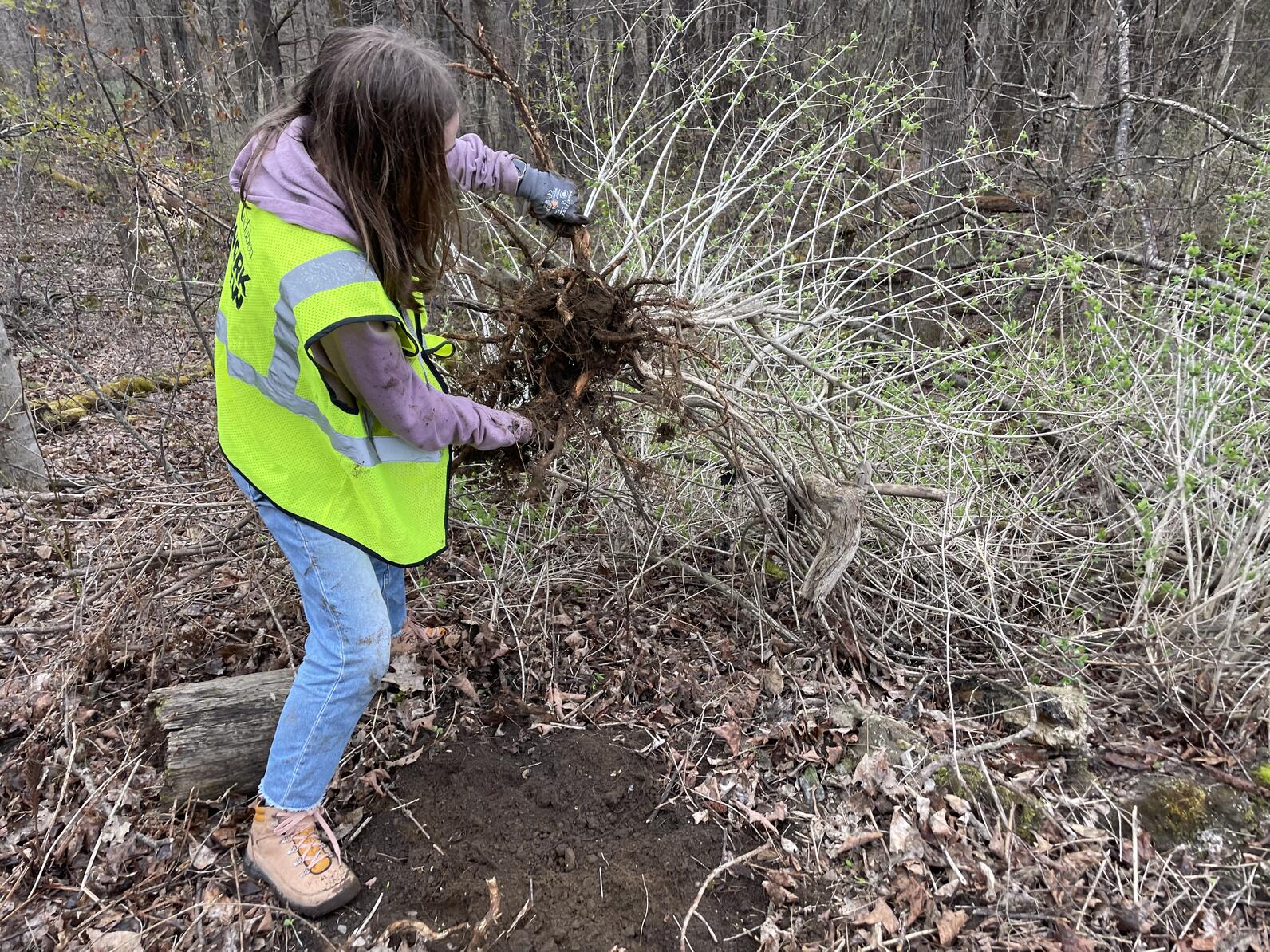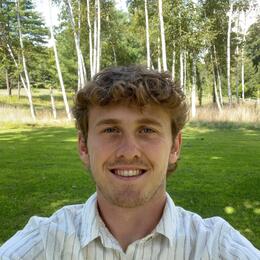The Junior Conservation Technicians (JCTs) returned on Earth Day to tackle conservation projects all around the Green Mountain Audubon Center (GMAC). The group began their week with Conservation Program Manager, Mark LaBarr, at the flood-damaged banks of the Huntington River. The JCTs worked together to plan and construct a new route for the river trail as well as removal of invasive plants along the new trail. Thanks to their hard work, the river trail has been rerouted, and is back open to the public! After some well deserved lunch, JCTs met with Serve Learn Earn (SLE) Director, Kate Gluckman, to learn about SLE programs being offered by our partner organizations, what life after high school can look like, and other helpful career and education-related resources available to students.
The JCTs continued their work in Audubon Vermont’s Plants for Birds gardens, preparing them for spring migration. Plants for Birds gardens are plots of native plants that support our native bird species and other wildlife, are cost efficient, and improve climate resiliency. JCTs worked on improving native plant habitat to support a diversity of bird species. The group divided and conquered; pulling weeds, planting flowers and constructing a trellis for native vine honeysuckle. The JCTs ended the day with priority bird identification practice ahead of Birdathon. Priority species are birds that are at risk of or are currently in decline due to climate change, human development, and habitat fragmentation.
The next day the JCTs continued their environmental stewardship work at the Birds of Vermont Museum. Here, they split into groups to pull invasive species and create waterbars along the trails. They learned how to identify and remove Multiflora Rose and Barrow’s Honeysuckle to enhance bird habitat. On the upper trails of the museum, the JCTs learned how to construct waterbars to prevent erosion. They learned to read erosion patterns and identify where and how to divert water from the trail. While the waterbar group worked, they were able to identify the song of a Blue-headed Vireo! After a long morning in the woods, the JCTs ate lunch outside and then explored the museum. A few JCTs have previously submitted and shown artwork at the Birds of Vermont Museum. We're excited to come back in June for an art workshop.
Later in the week the JCTs joined Tim Duclos, Forest Program Senior Associate, at the GMAC to remove invasive honeysuckle from stands identified as needing remediation in the GMAC Forest Management Plan. The group successfully removed over an acre of honeysuckle with loppers and shovels. They were also able to practice some of their tree ID skills and learned a few new tricks to distinguish similar species from one another.

We ended the week by studying the phenology of native plants. Phenology is the study of the timing of plant and animal life cycle events. It’s a great tool for understanding how climate change impacts the timing of life cycle events and the domino affect a single species can have on an ecosystem if its timing is off. At GMAC, we have a community science project called the Phenology Walk which includes 12 native plants found along trails through the Nature’s Notebook App. Data recorded at this time of year includes budding, leafing, and flowering times and is sent to the National Phenology Network. JCTs recorded phenological data of various plant species at the center, many of which could be at risk of being outcompeted by the invasive honeysuckle the group removed earlier. We thank the JCTs for a week of hard work and look forward to seeing them soon at JCT Birdation!
Learn more about Plants for Birds and how you can find local, native plants that attract birds in your area here.
Volunteer for our Phenology Walk! You can learn more about the program and plants being studied here.
Donate to our Birdathon! Birdathon is our annual fundraiser that supports countless projects at Audubon Vermont, including the Youth Conservation Leadership Program. Learn more and donate here.





